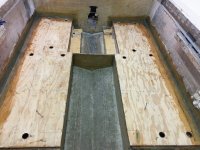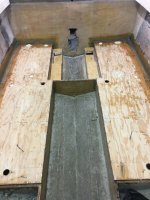76SeaRay
Lieutenant Junior Grade
- Joined
- Aug 24, 2017
- Messages
- 1,047
I read through the decking sticky and it seemed to imply that the deck is just screwed down on the stringers dry. Is that what most everyone does or do you coat the stringer tops with wet resin or peanut butter so that there is a resin bond between the underside of the decking and the top of the stringers? I have tapered the edges of the plywood where it runs along the sides of the boat and plan to lay peanut butter there then set the decking into it.





















